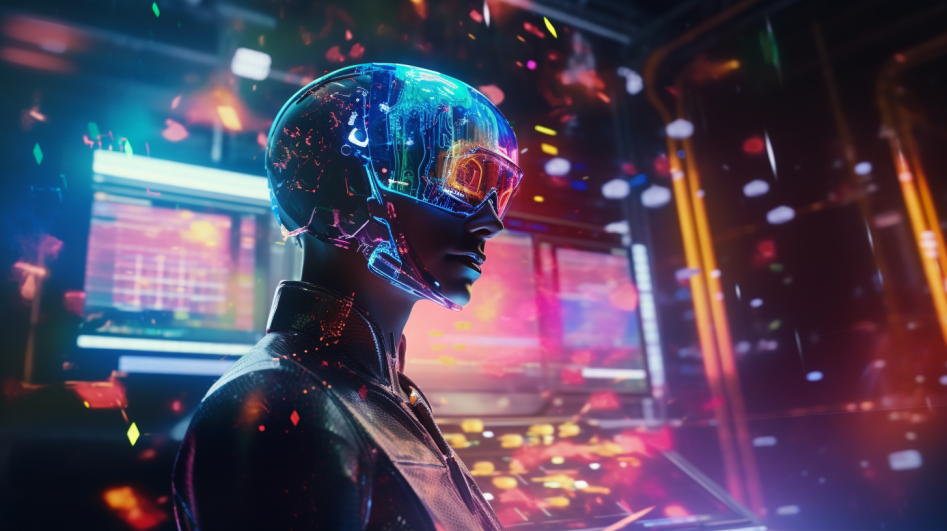How To Use Generative Fill: An Introduction To The Basics
Find out how to upscale your image editing skills with Adobe's Generative Fill!

In an age where artificial intelligence (AI) is as ubiquitous as a morning cup of coffee, we've seen it make the expected splash in the ocean of creativity. Indeed, the very fabric of our digital landscapes is being subtly re-stitched by these intrepid computational threads. One of these threads comes in the form of Adobe's Generative Fill, which is reshaping the tapestry of image editing in rather delightful ways.
What Is Generative Fill?
Now, I know what you're thinking: "What's so innovative about another Photoshop tool?" Well, Generative Fill isn't your run-of-the-mill, dime-a-dozen kind of tool. Imagine this: You're working on an image with a glaring hole in it. You're tempted to break out your trusty Clone Stamp or Healing Brush, expecting a long haul of click and drag. But, with Generative Fill, such grueling work is a thing of the past.
This tool can transform those bland empty spaces into vibrant elements that enhance your image. It's like a chameleon, understanding the color, light, and shading of your work, and filling in the missing pieces with almost uncanny precision.
How To Use Generative Fill
Ok, now let’s get down to business! Here are all the necessary steps for you to tackle this new tool head-on:
1. Photoshop Membership and Beta Version
First things first: you'll need a Photoshop membership. Now, as a Photoshop member, you have the ability to download the Beta version of Photoshop. This is currently the exclusive residence of Generative Fill. You can acquire this directly through the Creative Cloud app or from Adobe's official website. One click on "Install" at the top-right of the page, and you're ready to roll.
2. Opening Photoshop (Beta)
With your Photoshop (Beta) ready, open it up. Now, create a new image file. The dimensions are up to you—Generative Fill is rather accommodating.
3. Import Your Images
Next, import an image into your new file. This image is your canvas, your world ready to be transformed. You choose where the magic happens.
4. Generative Fill in Action
Now, let's get to the fun part. Grab the Rectangular Marquee Tool (that dotted box icon that's probably feeling lonely) and select an area of your image. This is where you command Generative Fill. On the floating toolbar below your selection, you'll find Generative Fill waiting for your instructions. Type in what you'd like to add, or leave it blank if you're feeling spontaneous.
5. Review and Choose
Click "Generate" and watch as Generative Fill conjures up your vision. When the progress bar completes, your image is transformed. Not quite what you expected? Generative Fill offers choices. Use the left or right arrows on the floating toolbar to cycle through different generated options.
Now, for those looking to expand their horizons, there's more to Generative Fill than just the basics. Perhaps you have an image that's smaller than your canvas. By selecting the entire canvas, you can command Generative Fill to fill up the blank space and expand your image beyond its original frame.
A word of caution though, this tool is in its Beta phase. While it's rather splendid with real-world images, it might have a little hiccup with virtual or in-game screenshots.

What Lies Behind Generative Fill?
The answer lies in the backbone of this feature, an advanced artificial intelligence model known as Adobe Firefly. Adobe Firefly is the driving force behind Generative Fill, making it more than an image editing tool. It's a sophisticated AI model built to understand, generate, and modify visual content in an intelligent manner. Much like the firefly it's named after, this AI model illuminates the path to creative possibilities in digital imagery.
If you're familiar with AI technology, consider Firefly as Adobe's answer to Google's Bard or Microsoft's Bing Chat. However, while these models specialize in generating and understanding text, Firefly's domain is images. It understands the visual language and uses this knowledge to generate and alter images based on user prompts.
The development of Adobe Firefly is the result of years of diligent work, experimenting and refining the model. Adobe's team has trained Firefly using a vast amount of visual data, helping it learn the nuances of aesthetics and design to produce results that are visually harmonious and contextually apt.
Data Breach or Learning Course?
While the capabilities of Generative Fill are impressive, it's essential to recognize that it isn't a flawless panacea. Like any powerful tool, it brings along a series of questions and concerns, primarily about data privacy and copyright infringement. Generative Fill functions by learning from vast amounts of user data. In a world where digital privacy concerns loom large, I’m not sure Adobe users were aware that AI models use their work as a training course.
These concerns highlight the importance of thoughtful regulation in this new era of AI-assisted creativity. It's a frontier with vast potential but also the need for rules to ensure fair play and respect for individual rights. Addressing these concerns is paramount to fully realizing the potential of Generative Fill and similar tools.
Bottom Line
As we plunge deeper into the realm of digital creativity, the introduction of tools like Generative Fill underscores the blurring boundaries between human creativity and AI-powered technology. It’s an exciting time, where artists are no longer confined to traditional tools and techniques but can leverage AI to reimagine the art of the possible.
However, as we leap forward to embrace this AI-powered creativity, it's essential to be vigilant. The potential pitfalls surrounding data privacy, security, and copyright infringement need to be navigated with caution and awareness. It's about finding the balance between the exhilaration of new creative possibilities and the practical considerations these tools entail.
